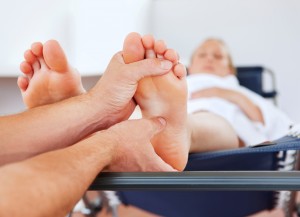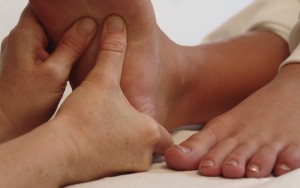What is Integrative Reflexology?
What is it?
 Our bodies are amazingly resilient, continuously adapting to physical, mental and emotional changes in our environment. Every minute of every day, our body’s systems work together to create subtle adjustments needed for continued good health. By applying therapeutic pressure to specific points on the hands and feet, an integrative reflexologist joins these silent processes within your body. Reflexology feels good, but it is much more than a good foot massage.
Our bodies are amazingly resilient, continuously adapting to physical, mental and emotional changes in our environment. Every minute of every day, our body’s systems work together to create subtle adjustments needed for continued good health. By applying therapeutic pressure to specific points on the hands and feet, an integrative reflexologist joins these silent processes within your body. Reflexology feels good, but it is much more than a good foot massage.
Reflexology feels good, but it is much more than a good foot massage.
Reflexology approaches the body as a complete macrocosm with interrelated systems. It is a holistic discipline which uses the therapist’s hands to apply alternating and firm pressure to stimulate physiological changes in the body. By activating the zone reflex points and meridian points, it creates beneficial responses in the nervous, electrical and chemical systems. As a “scientific art” reflexology is based on research regarding stress reduction, pain reduction, improvement in blood pressure, support therapy for cancer treatment, post-operative recovery and mitigation of neuro-physical and auto-immune dysfunctions. It has also been shown to ameliorate the symptoms of mild depression due to medical procedures or aging.
How does it work?
Your body systems mobilize in response to new sensory input. For instance, when you hit your elbow, your whole body responds. You jump. Your heart races. You may catch your breath from the pain. This principle also works for positive sensory input. In the case of reflexology, when your therapist slowly and intentionally applies pressure to points on your hands and feet, your whole body relaxes, allowing tension and pain to subside.
In the case of reflexology, when your therapist slowly and intentionally applies pressure to points on your hands and feet, your whole body relaxes, allowing tension and pain to subside.
There are nearly 7200 nerve endings in the human foot. The abundance of nerve endings in the hands and feet are connected to every part of the body. If an organ or body system is working hard due to external stressors, this can be observed in the tissue surrounding the nerves in the feet and hands.
 When the body experiences pain or tension, the muscles in that area contract and the “reflexive” area on the feet or hands will also feel tender or painful. By palpating this reflex area, the therapist initiates a response. This response works through the sympathetic and parasympathetic nervous systems which support all your body processes. It also creates a chemical reaction which enhances the processes of the venous circulation and the lymph system.
When the body experiences pain or tension, the muscles in that area contract and the “reflexive” area on the feet or hands will also feel tender or painful. By palpating this reflex area, the therapist initiates a response. This response works through the sympathetic and parasympathetic nervous systems which support all your body processes. It also creates a chemical reaction which enhances the processes of the venous circulation and the lymph system.
Reflexology, an integrative health practice, maps a reflection of the body predominantly on the feet, hands, and outer ears. It uses unique manual techniques to deliver pressure to neural pathways, assisting the body to function optimally. Research in reflexology has shown that it improves circulation. Circulation carries oxygen and nutrients to your tissues and the lymph system carries cellular waste away. Improved circulation can mean decreased muscle tension and pain. It can reduce swelling from injuries, surgeries or illness. Immune function, mental well-being and general health also improve when circulation is increased. From there, reflexology can affect each cell in the body. This is the positive sensory impact that supports the body’s ability to function and heal.
To summarize, reflexology allows the body to relax by releasing tension and improving blood flow. Cumulatively, it helps the body to adjust to its own healthy balance.